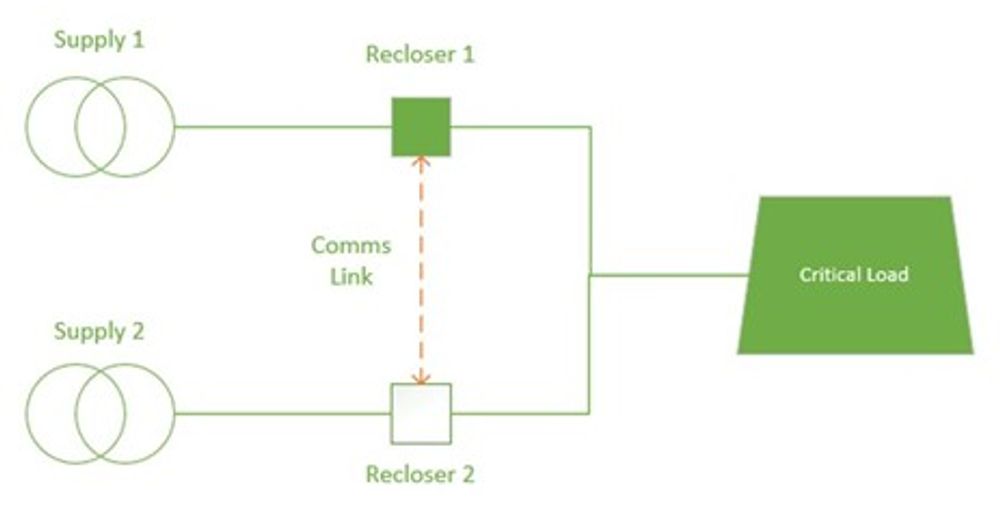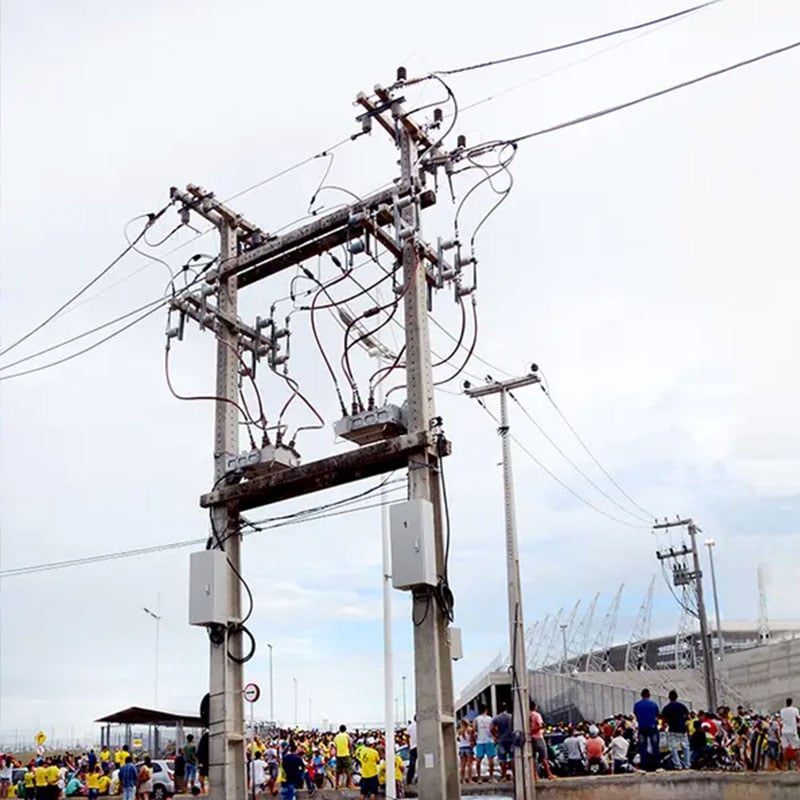When is power reliability highly critical?
All over the world, utility businesses and network operators are charged with providing a reliable supply of electricity. This is the operating goal, but on some occasions, failure to supply electricity carries increased consequences.
Think of critical infrastructure. A hospital? A water treatment plant? A data centre?
While these critical asset operators may build their own mitigation strategies for power outages, network operators can also offer increased reliability performance for specific connection points.
The technique is called Auto-Changeover.
Functionally, auto-changeover is the application of multiple sources to a load. If a source supply quality degrades, the auto-changeover scheme automatically switches to the backup supply.
This automation spreads the risk of outage across two different sources, providing a backup power supply if the primary source fails.
Fortunately, implementing this system is relatively straightforward, especially when devices such as NOJA Power’s OSM Recloser are supplied with this functionality as standard.
In this article, we explore a couple of ways to implement this scheme, then look at two examples of Auto Changeover in action.
The Basic Auto Changeover Configuration

Auto-Changeover is a risk mitigation strategy, where two separate sources are supplied for a single critical load.
To implement the system, engineers select two power sources to supply a load.
The power system engineer then designs a switchgear arrangement that automatically changes over supply between the two sources, whenever one of the power supplies fails.
The degree of outage mitigation provided depends on the independence of the supply.
If both incoming supplies come from the same substation, then the supply is only protected against failures of equipment in the connection chain from the substation to the critical load.
If the two supplies come from different zone substations, or different power stations, then the mitigation is far greater, offering protection against many more outage scenarios.
With this basic concept in mind, let’s explore two ways to implement this.
Auto Changeover without Communications
The simplest, cheapest way to build auto-changeover is to rely on voltage presence.
Reclosers such as NOJA Power’s OSM Recloser have voltage sensing on both sides of the circuit breaker. Therefore, in the open state, the breaker can check that:
- The critical load has voltage AND
- The backup supply is present
Under this arrangement, there is no need for the two devices to communicate directly with each other. The presence of voltage on either side is enough to make switching decisions.
If the power supply fails on the primary supply (recloser 1) in our figure, the device is programmed to automatically open on loss of voltage. This prevents a backfeed from the other source when the power is restored from the backup.
Recloser 2 will see the backup source voltage high, but critical load voltage low. In this condition, it can automatically close the breaker, restoring supply.
If Recloser 2 closes after Recloser 1 opens, this is a “break before make” scenario. The load experiences a minimal outage, but there is no backfeeding through the original supply line.
Alternatively, if Recloser 2 closes immediately on sensing loss of voltage to the critical asset, this is “make before break”. It carries extra risk of backfeeds, but it minimises the critical load outage duration.
Limitations to Auto-Changeover without Communications
This first method is cost effective but has a couple key design limitations.
- Operation, control and Works Practices
- Closing onto faults
- Dealing with Power Quality aside from Voltage
The operational challenge with this design is there is no central way to disable the automation.
Maintenance teams who need to work on the critical load must be aware that opening one breaker may cause the other to operate. This is an added risk which must be handled through works practices.
Secondly, this design does not prevent closing onto faults.
If a fault occurs downstream of the primary supply, the primary recloser will trip to interrupt the fault. The problem arises when the second recloser detects the fault as a simple outage, and proceeds to reenergize the fault.
The second device can also be programmed to trip on the fault, but the system has created an extra energization of the fault.
If these two limitaitons are not critical to the project, then a communications-free auto changeover scheme offers improved reliability and customer value.
If these two limitations are critical, then we have communications enabled auto-changeover schemes to address these cases.
Auto Changeover with Communications

To address the limitations in our first Auto-Changeover implementation, we can implement a communications link between the two switching devices.
NOJA Power’s OSM Recloser has a built in Auto-Changeover function that uses this communication link to share information between the two devices.
Each Recloser monitors both the supply quality, and the automation system quality.
If there is a power degradation, the reclosers communicate between each other, switching power between supplies.
If a fault occurs, the reclosers communicate with each other, avoiding an extra recloser operation.
Lastly, operators can disable the automation scheme from either side, solving the works practices challenges.
The most common method for implementing communications between the devices is through fibre optic communications, but ethernet, Wi-Fi or Radio communications are all possible.
Project Examples
Power Supply to Brazil Stadium

To soccer fans, there are few more critical power supply points than a world cup stadium.
In 2014, NOJA Power’s OSM Reclosers were used in an auto-changeover scheme at Brazil’s Castelão stadium.
This installation had both reclosers installed in close proximity, simplifying operations challenges but offering clear reliability benefits for the stadium.
Power supply to Railway in Victoria Australia

Auto changeover functionality is also applicable to NOJA Power’s GMK product for underground connections.
In this project, two NOJA Power GMK’s were used in an auto-changeover scheme to control the power supply to the electrified rail in Victoria Australia.
The two GMK’s were connected with a communications link, sharing information on supply quality and fault presence.
This provided risk mitigation against closing-onto-fault scenarios, while maximising the power uptime for the operating rail network.

